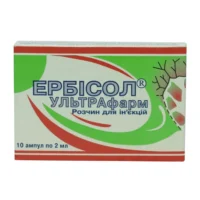Description
Silibor Max (Silymarin) Capsules 140 mg. №20
Ingredients
- Each capsule contains 140 mg of silymarin.
Dosage
- Take 1 capsule daily with water, preferably with a meal.
Indications
- Silibor Max capsules are indicated for liver support and detoxification.
Contraindications
- Do not use if pregnant, nursing, or allergic to silymarin.
Directions
- Store in a cool, dry place away from sunlight. Keep out of reach of children.
Scientific Evidence
Silibor Max capsules contain silymarin, a compound extensively studied for its hepatoprotective properties. Silymarin acts as an antioxidant, safeguarding liver cells from damage induced by toxins and free radicals. It also exhibits anti-inflammatory effects, potentially reducing liver inflammation and enhancing liver health. Clinical trials suggest that silymarin supplementation may enhance liver function tests in individuals with liver diseases.
Additional Information
- Before starting any new supplement regimen, especially if you have a pre-existing medical condition or are taking other medications, consult a healthcare professional.
- While generally well-tolerated, some individuals may experience mild gastrointestinal symptoms.
- For optimal results, incorporate Silibor Max capsules into a healthy lifestyle, including a balanced diet, regular exercise, limited alcohol consumption, and maintaining a healthy weight to support liver function.





